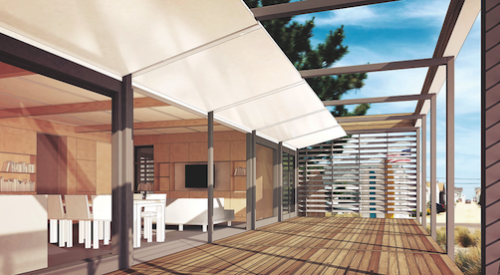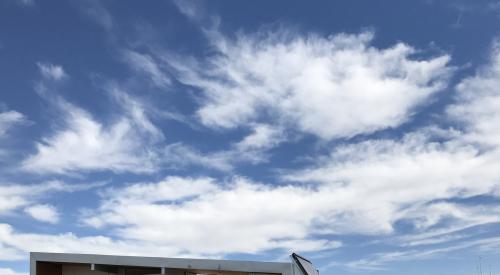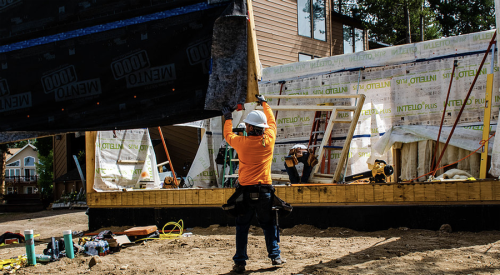| Clerestory windows, overhangs and an angled wing on the University of Colorado's house add aesthetic appeal while increasing ventilation and daylight, providing shade in the summer and maximizing solar opportunities. |
The first Solar Decathlon, sponsored by the U.S. Department of Energy, BP Solar, The Home Depot, the American Institute of Architects and others, challenged college students in various disciplines to design, build and live in a solar-powered, energy-efficient home.
The goals of the contest, which took place Sept. 26 to Oct. 5 on The Mall in Washington, were to educate the public and the participating students about solar energy, market-ready solar products and the nature of energy use in American households.
Each team of 20 to 100 students and professors worked on its project for 1 1/2 years and was judged on 10 criteria including design and livability, interior comfort, and ability to run appliances and a home business, draw hot water, and charge and operate an electric vehicle.
The University of Colorado took first place with a home oriented as much to the street as the sun. It was designed to show that an appealing, attractive home also can be environmentally responsible and use zero energy from the grid. The home was built using R-29 structured insulated panels, which reduce cutting waste and cycle time; sustainably harvested, fast-growing aspen for beams, columns and joists; no-VOC paints, sealants and adhesives; energy-efficient appliances; bamboo flooring; insulation made from sheep's wool; and 630 square feet of single crystalline photo-voltaic (PV) modules from AstroPower.
More information, photographs and specifications of the 14 houses in Solar Village, as the neighborhood of PV-topped little homes was called, are available at www.eren.doe.gov/solar_decathlon.











